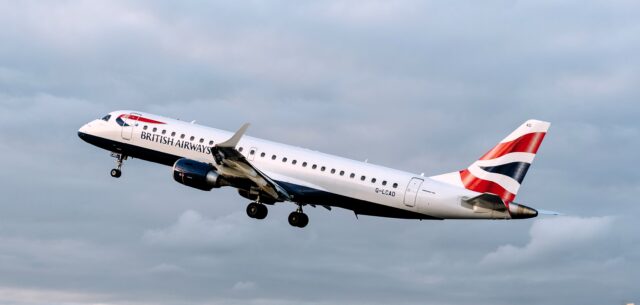
Fewer delays and reduced bottlenecks could help millions of passengers each year and deliver economic growth as the Department for Transport today (22 October) unveils new plans to modernise UK airspace design.
In a critical step towards delivering a manifesto pledge to support airspace modernisation, a consultation launched today will seek views on proposals to establish a UK Airspace Design Service, a new team of aviation experts who will lead the charge and work with UK airports to improve the way planes fly in, out and over the UK, starting by looking at London’s airspace.
By facilitating upgrades of the “highways of the sky”, the plans could reduce delays, emissions and noise pollution – making the industry more efficient and delivering important economic growth for the whole of the UK.
In July, UK airspace experienced some of its busiest days on record with over 8,239 flights. With over 2.6 million aircraft flying through the UK every year, both the Department for Transport and UK Civil Aviation Authority (CAA) are seeking views on how a UK Airspace Design Service could deliver on airspace modernisation – utilising new technology to meet demand and ultimately help pave the way for incorporation of new technologies, such as drones and spacecraft.
Mike Kane, Minister for Aviation, said:
“UK airspace is one of the nation’s biggest invisible assets, but it’s been stuck in the past – a 1950s pilot would find that little has changed.
“Our once-in-a-generation creation of a UK Airspace Design Service will not only drive forward airspace modernisation and create a system that’s fit for the future, but it will help create quicker routes, ease delays, and reduce harmful emissions – making air travel a better experience for all.”
Much of our current airspace was designed in the 1950s when there were fewer flights and aircraft navigated using a series of ground-based beacons.
By enabling aircraft to use advanced navigation technologies, the UK Airspace Design Service will be able to plan the more efficient use of the finite amount of airspace in the UK, including use of continuous climb and descent profiles, and reduced need to hold aircraft.
London airspace is the busiest and most congested in the UK and delays in London often have a knock-on effect for the rest of the UK. The first phase of the UK Airspace Design Service would focus on the complex and busy airspace around London and the Southeast.
Rob Bishton, Chief Executive at the UK Civil Aviation Authority, said:
“Modernising our airspace is crucial to delivering a more efficient, sustainable, and resilient system. The proposals we’ve outlined today set out the next steps in our ongoing efforts to progress the modernisation of UK airspace.
“This builds on the important work already done across the industry towards a more streamlined, sustainable airspace system that benefits passengers, airlines and local communities.”
The UK Airspace Design Service would create a holistic and integrated design, simplifying the process and bureaucracy in coordination with airports, airlines and air navigation service providers to deliver benefits for the passenger and local communities impacted by aviation noise.
Airspace modernisation will reduce disruption as airlines utilise more efficient flightpaths. It could also cut harmful emissions with planes spending less time in the air, supporting our mission to create a greener industry alongside the use of sustainable aviation fuel (SAF) and the upcoming SAF mandate.
All this goes hand in hand with the Government’s commitments to tackle climate change, get us to net zero by 2050 and secure the aviation sector’s long-term future.



